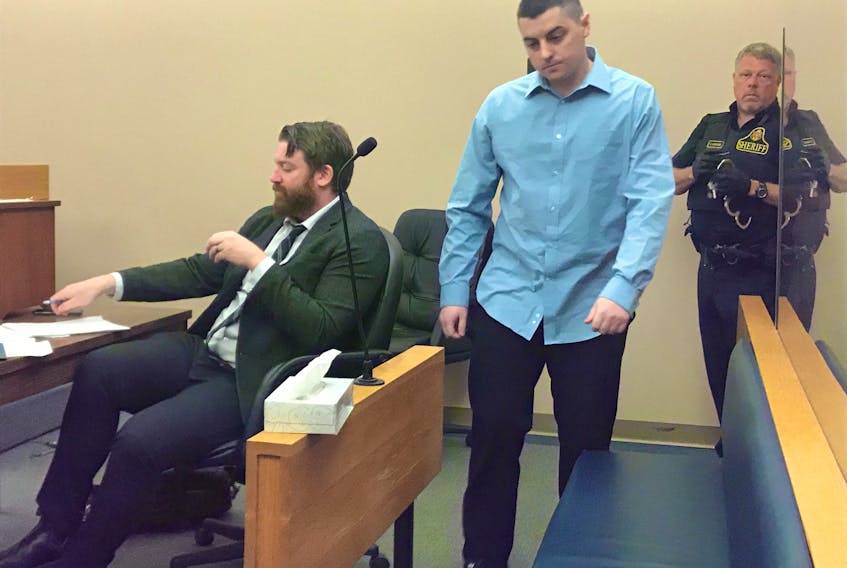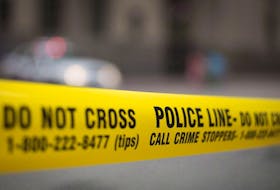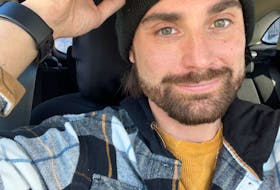ST. JOHN'S, N.L. — On the day she was shot, Samantha Burke told police in an audio-recorded statement it was her longtime best friend Michael Hannaford who had done it.
On the witness stand in provincial court this week, Burke said she couldn't remember who had shot her last May, since she was experiencing a drug-induced psychosis at the time.
Next week, a provincial court judge will decide whether to accept Burke's statement or rely solely on her court testimony as evidence at Hannaford's attempted murder trial.
Crown prosecutor Paul Thistle has argued it is the statement that should be accepted as evidence, pointing out Burke had given it to investigators in the hospital the same day she was shot and had clearly named Hannaford, going as far as to spell his name for the officers. Hannaford had gotten "spitey" over a $70 debt he owed her, she told police.
RNC officers had initially responded to a report of an altercation outside Hannaford's Empire Avenue home on May 18, 2018, and had arrived to find him, Burke and another woman outside the residence. An SUV with a broken window was parked in the driveway, and the second woman testified Hannaford had smashed it with a machete in an attempt to defend himself from Burke. Police found a sheathed machete inside the home near the front door.
As officers were escorting Hannaford to a police vehicle, Burke had reportedly yelled at Hannaford, “When am I getting my $70 or I’ll tell them what you did to me!” One of the officers testified Burke then told him that Hannaford had shot her earlier that morning, and then lifted her shirt to reveal a bloody bandage on her side. The bandage covered two holes, the entrance and exit wounds of a bullet.
Burke had no reason to lie about Hannaford being the shooter, Thistle told Judge Colin Flynn Friday, and actually had reasons to say it wasn't him. They had been friends for years and she had told police it broke her heart to see him arrested, he explained. If Hannaford was charged and went to jail, her chances of getting her $70 back was slim.
"This isn't like a complete stranger identifying a robber at a convenience store," Thistle said. "She was very familiar with Mr. Hannaford."
Though Burke may have spent the previous three days on a drug and alcohol binge, RNC investigators didn't report any signs of impairment and Burke sounded coherent and was speaking clearly in the audio recording, Thistle pointed out. Forensic testing revealed a single particle of gunshot residue on Hannaford's right hand when he was arrested, he reminded the judge.
The strongest evidence, Thistle argued, was a text message exchange on a cellphone seized from Hannaford's car. In it, two people - one identified as Sam, the other as Mike - argued over a $70 drug debt in the hours around the shooting, and spoke about meeting on Crosbie Road. That's where Burke said to police and testified in court she was shot.
Though Burke's statement to police didn't include the same details about the argument, Thistle alleged this was because Burke hadn't wanted to tell them about the drugs.
In the text messages, the person called Mike wrote about having new toys he wanted to try out if Sam showed up at his home. The person named Sam referred to him having threatened to shoot her.
In another text exchange on the phone from the same time period, the phone owner wrote to another person, asking, "Got any rounds?"
"It appears to be a conversation between the two of them arranging the purchase of ammunition," Thistle told the court, saying the text message evidence was independent of Burke's statement and testimony. "Mr. Hannaford has to be the person that shot Ms. Burke."
Defence lawyer Tim O'Brien has argued that the judge should consider Burke's testimony at trial over her statement to police, pointing out investigators did not video record the statement nor did Burke give it under oath. One of the investigators had testified she couldn't rule out that Burke had been impaired or in shock due to her injuries at the time, O'Brien said. Without video, it is difficult to assess Burke's state during the interview, he said.
"I suggest that raises a number of concerns with the reliability of the information she provided to police on the day in question," he argued.
A gun recovered by police in the bushes on a residential property near Hannaford's home did not contain his DNA and did not match the description of the gun Burke had given police, O'Brien said.
He reminded the court of testimony given by forensic analyst Nigel Hearns, who had explained that gunshot residue particles are easily transferred on contact. There were legal guns in Hannaford's home at the time of his arrest, since his father is an avid Hunter, O'Brien said, suggesting that's how the gunshot residue particle could have gotten on his hand.
Though Burke had told police a resident of Crosbie Road had come out of their house and asked if there had been a gunshot, when officers canvassed the neighbourhood, no one reported hearing anything extraordinary on the night in question, O'Brien pointed out.
"I think all of these concerns are magnified by Ms. Burke's evidence that she had done a serious amount of drugs and had been up for three days," O'Brien said, noting one of the first police officers to respond to the disturbance complaint at Hannaford's home had told the court Burke had been saying things that didn't quite make sense.
Burke had testified she had no recollection of the text exchange on Hannaford's phone, and didn't believe she had been a part of it. She also told the court she had gotten involved in a number of violent altercations with different people the night she was shot.
O'Brien said he believes the evidence doesn't rule out the possibility that Burke had been shot by someone other than Hannaford.
Once Flynn decides whether or not to accept Burke's statement to police as evidence, Hannaford's trial will continue.
Twitter: @tara_bradbury
Related









